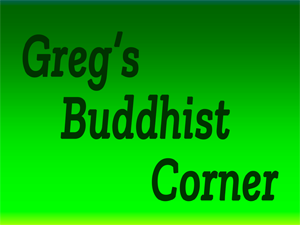Fact & Fiction in the Era of the #MeToo Movement
By Greg Suffanti
QFWF, August 18, 2018
This story isn’t new … at all
When I was asked a month ago to write an article about Tibetan Buddhism for this website, I thought “super”, and greatly looked forward to writing about a topic that has truly and positively transformed my life (not to mention helping countless others as well).
I’m sure any other spiritual person would say exactly the same thing … no matter the religion. That’s the point, right?
I figured I’d cover the 1,500 year history of Tibetan Buddhism and then do a blurb or two at the end about some of the sex scandals currently marring Buddhism’s more than 2,500 year history.
There are abuse stories going back decades involving Theravada, Mahayana and Zen Buddhism, and it would’ve been unfair of me to not acknowledge this reality.
Then, towards the end of July, there was yet another headline-grabbing scandal involving the religious head of an international (Tibetan) Buddhist organization (Sakyong Mipham Rinpoche and Shambhala International) and sexualized violence.
In the first week of August, Shi Xuecheng, abbot of Beijing’s Lonquan Buddhist temple, and head of the China Buddhist Association, was accused in a 95 page report submitted by two former monks, of “sexually harassing and assaulting multiple female nuns”[1].
With more than a million followers on Weibo, the Chinese version of Twitter, this is one of the largest scandals in the annals of the whole of Buddhism.
Last year, it was accusations by journalist Mary Finnigan, of sexual crimes against numerous women, that brought the downfall of Sogyal Rinpoche (who headed Rigpa International).
Sexual violence is any sexual act …
According to the World Health Organization,
“sexual violence is any sexual act, attempt to obtain a sexual act, or other act directed against a person’s sexuality using coercion, by any person regardless of their relationship to the victim, in any setting”[2].
There are approximately 500 million Buddhists in the world, and nearly half of them come from China[3]. Any scandal hurts an institution, however, how those in charge respond to finding meaningful and lasting solutions to these ongoing problems is what really matters.
These problems are also opportunities to make real changes to (already known) systemic organizational issues and to hold those accused to the same standards as the rest of society.
Buddhism often advises students to see themselves as sick, and to see the Dharma (Buddhist teachings) as the medicine.
The teacher is like a physician, diagnosing and offering treatment.
Now, it would appear that there is illness within the Buddhist community, and that now, some of the “physicians” have become gravely ill.
Can the Buddhist community find effective treatment? These serious problems can be treated, like a cancerous growth, by removing the cancer itself, before it spreads. To not do so places the patient at great risk, and allows no opportunity for healing to take place.
Shambhala’s ruling body, the Kalapa Council, resigned en masse after the accusations against Sakyong Mipham Rinpoche became known, stating that
“we recognize that parts of our system are broken, and need to be dissolved in order to make room for real change”[4].
By comparison, those at the top of the Rigpa International management team have remained the same for decades. Both organizations are accused of intransigence, by those investigating the many allegations, when it comes to fully cooperating with outside parties.
Perhaps most importantly, women are being believed
The #MeToo movement against sexual violence is helping women find the courage to finally tell their stories. Women are being heard, and perhaps most important of all, people are listening and believing the stories that the victims/women tell.
Heads are rolling almost daily, and it is clearly evident that no area of society, no organization and no country is exempt from this age-old problem.
The question is: Is the Buddhist community listening to this call for justice, or, are we sweeping the problems under the rug in the name of forgiveness, compassion and self-preservation?
As Buddhists, are we looking for real solutions to problems, like Buddhism emphasizes over and over again, or are we following the lead of other religious institutions, like the Catholic church, whose shameful history of pay-offs and transfers has shielded known offenders for decades? Are we inviting our own demise?
Suddenly, it felt not only relevant, but, as a Buddhist, necessary to contribute to this whole issue of sexualized violence in Buddhism in the era of #MeToo.
In case you’re a man and feeling left out, there is now a #UsToo movement for male victims of sexual violence.
Perhaps not surprisingly, the stories from the male victims are virtually identical to those of the female, demonstrating that victims’ experiences of (sexual) crimes aren’t gender dependent. It would appear that what the Buddhists have been saying all along is true: “We’re all the same.”
Lock them up, lock them up
Of all the stories I’ve been reading on the internet doing research for this article, it was Katy Butler’s interview (on this subject) for ‘tricycle’ magazine that I thought spoke most fully on the topic of sexualized violence in the Buddhist community and the responsibility of the community itself to bring about effective change[5].
However, in my opinion, she didn’t go far enough. What I didn’t encounter anywhere in my research were mention of the two P’s: prosecute and penalize.
I read of one student saying that with each breath he exhaled, he hoped that his accused Lama was freed from his incredible suffering.
There are endless stories of students seemingly condoning abuse from their Lamas for decades. To the non-Buddhist world this might seem a bit strange, even crazy, but, for students of Vajrayana Buddhism, the Lama is the Buddha; not simply like the Buddha.
So, naturally you don’t want “your” Buddha to suffer. Similarly, who are you to ever question the actions of a Buddha?
What about the victims?
I read about whole Buddhist communities suffering the loss of their treasured and precious leader(s) and I read about significant struggles to heal.
These are heart breaking stories of abuse.
One has to wonder what sort of closure and full healing the victims (and whole Buddhist communities) will be able to achieve if those accused seem to escape unpunished; just as those accused in the Catholic church have done for decades.
It isn’t that Buddhists behaving badly don’t go unpunished, but, just like a lot of organizations, those at the top seem to be impervious to the law and their crimes seem to go unpunished.
In June of 2018, Buddhist monk Sayasith Sittipanyo was arrested in Nashville, Tennessee, and charged with
“seven counts of sexual battery by an authority figure and eight counts of displaying sex acts to a minor”[6].
Not the sort of story that makes the front page of the New York Times.
As Buddhists we should be ashamed
In the case of both Sogyal Rinpoche and Sakyong Mipham Rinpoche, we’re talking about decades of systemic abuse that was not only tolerated, but, covered up.
According to their websites, both Lamas are now “in a period of reflection.”
Sadly, Sogyal Rinpoche has cancer and is reportedly in frail health.
Both organizations are conducting third party investigations through law firms, however, as Carol Murchasin noted in her preliminary investigation of Shambhala,
“they (Shambhala) cut off communication channels and without access to Shambhala, and anyone accused, it was impossible to do a full investigation”[7].
Considering that Rigpa settled a $10 million dollar (similar) claim back in 1994, and the fact that the Sakyong hasn’t really acknowledged any wrongdoing, only regret that
“some of these women have shared experiences of feeling harmed as a result of these relationships”[8],
one has to wonder whether anything concrete will come of this beyond new internal codes of behavior.
Where is the moral backbone of the affiliated organizations involved to pursue a “traditional path”, (like the rest of us, should we be accused of crimes), and to fully cooperate with the proper authorities to possibly bring charges and to criminally prosecute these two?
To not follow the law, to hide facts, to cover-up, is to disregard and disrespect the vast majority of Buddhists, who are decent, law abiding people. To not follow the law is to disrespect the victims. In order for the victims to heal, the law must be enforced regardless of the high status of the accused.
Placing people above the law places the future of Buddhism in a position of having a credibility problem. Perhaps the only way to really change the culture of the (bad) “Lama”, is to put the guilty ones behind bars? That would send a clear message to everyone.
Are Buddhist religious leaders above the law?
Is this the message we Buddhists want to send the world?
What’s going on?
It seems weekly that the #MeToo movement against sexual violence unearths yet another headline-grabbing sexual predator. The #MeToo movement has finally given voice to the female experience and allowed this experience to be credibly and sympathetically received in our male-dominated society.
This is real progress, because victims of sexualized violence have been historically casted as liars and instigators. In researching this article, aside from pouring over the internet, I also spoke with my friend Paula de Wys, director & founder of Maitreya Instituut (1979). Paula also sat on the international board of directors of Maitreya Instituut’s parent organization, the FPMT, for 28 years.
The FPMT, the Foundation for the Preservation of the Mahayana Tradition, is one of the largest international Buddhist organizations in the world.
In addition, I sought the help of my friend, Buddhist monk, Ven. Khedrup, who currently divides his time between Sera Monastery in South India and the West.
Khedrup has been very concerned about this topic for some time; worried that victims are not given the care they deserve, and that continued enabling of sexualized violence by Dharma communities will irreparably harm Buddhism.
The current allegations against Sakyong Mipham Rinpoche stemmed from Andrea Winn’s “Project Sunshine Report”, which was released on 28 June 2018.
The journalist Mary Finnigan broke the Sogyal Rinpoche story in July of 2017, following her earlier work writing about the multiple allegations against Sogyal Rinpoche, including assault and battery, dating back to 1994.
He left a trail of destruction and betrayal behind him
Sakyong Mipham Rinpoche’s father, Trungpa Rinpoche, who founded Shambhala back in the mid 1970’s, was one of the most controversial Tibetan Lamas to ever appear in the West. Multiple books have been written about this enigmatic and brilliant man, who was equally as famous for his partying and carousing ways as he was for his obvious intelligence and skill at teaching Mahayana and Vajrayana Buddhism to his students.
Trungpa Rinpoche more or less introduced “crazy wisdom” to the West. This traditional Tibetan teaching style essentially shocks the students into realizing basic Buddhist teachings. This is significant because in the succeeding decades “crazy wisdom” would come to justify any and all behavior. It became permission to do practically anything.
Trungpa Rinpoche was truly unconventional: although married, he openly slept with other women, many of them his students. He smoked and drank as well.
He died, aged 48, in 1987 of alcohol related complications.
His successor, Osel Tendzin, who died in America in 1990 at age 47 from AIDS, was even more controversial. He engaged in drug use and promiscuous behavior, taking no precautions (including informing his partners of his AIDS status) at a time when HIV meant certain death. At least one of his victims died of AIDS.
He left a trail of destruction and betrayal behind him and was the first westerner (American) to ever head an international Tibetan Buddhist organization. According to the New York Times, he thought regarding his AIDS, that he could “change his karma”[9].
Was this more “crazy wisdom”? A lesson in impermanence?
As a gay man with a 22 year history of HIV, I am appalled by this sort of story and again, I think, “where were the authorities?” This is criminal behavior.
It was this legacy of womanizing, fraternizing and just plain disgusting (if not illegal) behavior that Sakyong Mipham Rinpoche inherited when he took over after the death of Osel Tendzin.
Is it really so surprising that these variations on a basic theme continued?
There is a sacred duty to help and to respect all individuals concerned
In an era when ethics and morality seem to be skating on thin ice, the #MeToo movement appears to be the counterweight to any notion that we’re slipping hopelessly away from our basic societal tenets of honesty, decency and respect.
I personally open-heartedly welcome the movement, and think the moral and ethical house-cleaning that is going on should begin first with those who preach and earn their living from the waters of the world’s religions.
There is a sacred duty of those who spiritually help others to remain within the realm of the helpful and respectful.
There is also a sacred duty of those working at religious centers, in any capacity, to uphold those values and not bring harm to either individuals or the center itself.
In an interview with tricycle magazine, the journalist and writer Katy Butler, talked to the magazine’s editor about these very topics, and said,
“We Buddhists are nothing special,” noting that people somehow think that “Buddhist communities are somehow going to be safe from every other current in our society”[10].
In these often hermetically sealed worlds, breaks from the traditional norms of society can easily come into existence, and often in the name of remaining within the hierarchy; thus, those involved are protecting and effectively perpetuating the behavior of the perpetrators.
If there is a common thread to all stories of sexualized violence, it is that they are not isolated incidences; and that they negatively impacted multiple people over many years. This can only occur with the help of others.
Katy Butler concludes her interview by saying that
“This is a problem we co-created as a community, in which I played a part … as a community, we are all complicit”[11].
All involved sign contracts promising ethical behavior
There are solutions to these problems, but there must be a willingness of all those involved to actually take responsibility to ensure a safe and respectful environment.
I can honestly tell you that in all my 18 years of being a volunteer at a Buddhist center I’ve not seen or heard anything disrespectful to myself or another individual.
I’ve had 6 different Tibetan Lamas as overnight guests in my home through the years, and have only witnessed the most exemplary behavior.
I know of students feeling offended by comments made by their treasured teachers, but nothing further than hurt feelings. That’s the boring truth.
At the FPMT there is a decade-old ethical policy in the form of a contract, that not only the teachers, but everyone involved must sign. This includes all volunteers. It is essentially the same sort of document that teachers and therapists sign, prohibiting sexual contact with students or patients.
Do I know of sexual encounters and relationships that have occurred at Maitreya Instituut through the years? Of course. I needn’t look farther than myself.
However, the contract does not preclude consensual, respectful relationships. It does prohibit teacher/student relationships.
I think this is wholly appropriate and I know of not one instance where this ethical line has been crossed … and I’ve asked.
FPMT centers
Lama Zopa Rinpoche’s (LZR) FPMT organization has a number of Geshes and Lamas who serve in different ways. Part of the teaching staff tours many of the 164 FPMT Buddhist centers around the world, while others serve as resident teachers.
The resident teacher at Maitreya Instituut in the Netherlands, Geshe Sonam Gyaltsen, has been in that function for more than 25 years. Students’ exposure to different teachers creates a choice in Lamas as well as a more decentralized structure. This is important.
As Khedrup said to me when I asked him why the FPMT seemed to have escaped the problem of sexualized violence, he said,
“certainly students are encouraged to attend LZR’s teachings, but not exclusively. LZR ensures that the best of the best teachers are available to FPMT students, not prioritizing his own charisma. This is a healthy alternative to a top-down charismatic structure which leads to problems.”
One of the ways that the FPMT tries to ensure ethical conduct is maintained at centers is to have trained Sangha familiar with the precepts to help balance the teachings and create the appropriate atmosphere. As Paula de Wys noted,
“being a monk or nun does not prevent sexual misconduct but it does make both the ordained person and others very aware that to commit sexual acts, and certainly if there is coercion involved, means crossing a line that should not be crossed.
The same is the case involving signing an ethical conduct document.
It is not the signing that helps prevent sexual misconduct, but the awareness that a promise has been made, and acting in contradiction to what one has voluntarily agreed to constitutes breaking one’s word. That is an uncomfortable feeling which helps prevent crossing that line.”
Also, the Basic Program, taught at all large FPMT centers, includes teachings about carefully selecting a teacher. As Khedrup reminded me, it is also taught that
“the teacher’s words and conduct must always be examined in light of the teachings, and that one should never follow a teacher blindly.”
I can recall my own teacher, Ven. Kaye Miner, telling many horror stories of abuse and other criminal behavior from Lamas to drive home the point that not all teachers are ethical. Paula added,
“students of charismatic lamas really want to believe that their teacher is always right. The Dalai Lama says over and over that we must use our common sense, and if we see or experience incorrect behavior, even (especially!) from our teacher, that we should speak out.”
I’ve visited FPMT centers around the world, and there is a “Lama Zopa feeling of openness and inclusiveness” that permeates each center.
Buddhist centers with beer busts on weekends
On the other hand, I know of several Buddhist centers from other traditions that have “beer busts” on weekends. Perhaps it is overly simplistic of me, but it seems to me that if you’re going to throw alcohol into the mix, you’re going to sooner or later have problems? One of the things that struck me reading about Mipham Rinpoche was the recurring theme of alcohol-fueled parties followed by sexual aggression that appeared in the stories of the various female victims.
All of the stories I read about sexual abuse in Buddhist communities, from the 1970’s onward, told tales of not being believed and ultimately of being ostracized from their community; a pattern mimicking the historical trends of the rest of society.
It is our responsibility to criticize … with a good motivation
Sogyal Rinpoche and Sakyong Mipham Rinpoche have created international organizations, and between them, they have more than 300 Buddhist centers around world.
It would be patently unfair of me to not mention that these men have done great, good deeds in their lives, and that their centers have helped thousands of people to lead better, happier lives.
My motivation in writing this article is to support the #MeToo movement, and to voice my own opinion, which is that, in order to move forward, we must take responsibility as a Buddhist community to not protect or cover-up these alleged crimes, as the mounting evidence grows.
His Holiness the Dalai Lama has said on the subject of Lama’s misusing their power, that
“if someone is supposed to propagate the Dharma, and their behavior is harmful, it is our responsibility to criticize this with a good motivation”[12].
The consequences of not fully committing to rectifying these serious problems is that future generations will look with an untrusting eye towards the whole of Buddhism. It is trust that allows all relationships to flourish and grow, and trust which allows for the special student/teacher relationship to thrive and to bear fruit.
Mahayana Buddhism is an oral tradition which sanctifies the relationship between teacher and student. To jeopardize the nature of this profound relationship is to change the possible (positive) outcome.
For a Buddhist, one’s teacher is no further than the center of one’s heart, which is the center of one’s universe. To betray that trust is to lose one’s very center, one’s heart.
If we as a Buddhist community don’t act responsibly, we are ensuring that future generations will look with an eye of doubt, and that that doubt will damage Buddhism’s standing in the world. Just as the film producer Harvey Weinstein was part of a culture of abuse that was aided and abetted for decades, the Buddhist world’s own culpability is strikingly similar.
The #MeToo movement spawned from Mr. Weinstein’s downfall. It remains to be seen what concrete solutions come from the world of Buddhism in reaction to the question of sexualized violence within religious communities.
Katy Butler says in her interview with ‘tricycle’ magazine that
“it’s the bystanders, in a sense, who really matter”[13].
In Hong Kong, there is the Buddhist Tribunal on Human Rights, as well as the International Buddhist Ethics Committee.
On 2 April 2018, the Committee sentenced Rigpa and Sogyal Rinpoche as
“responsible for the serious crimes of Torture and Slavery, Fraud and Organized Crime, Violation of Women’s Rights and Violation of Buddhist Law”[14].
One of the ways they stated that Rigpa could begin making amends was to
“donate its millionaire material possessions to Sogyal Rinpoche’s victims”[15].
Further, the Committee pronounced Sogyal Rinpoche a
“False Buddhist Master”[16].
However, the governing body has
“the ostentation to enjoy independence and liberty from state and national regulation and control”[17].
Is a ruined reputation a replacement for actual justice?
Ms. Butler asserts that
“we haven’t gotten to redemption yet”[18].
I agree. In my opinion, the only road to redemption is the road most of us have to travel anyway: It’s called following the law and paying the price if you don’t.
If the Buddhist community stands up and offers up its own to be given a fair trial by a jury of their peers, then there can be full healing and ultimately redemption.
To not act in such a manner is to close off the possibility for closure for the many victims. The choice is black and white.
Just this week (15/08/18), a grand jury in the US state of Pennsylvania has released a scathing report in which bishops and other leaders of the Catholic church are accused of covering up more
“than 300 priests over a period of 70 years, persuading victims not to report the abuse, and law enforcement not to investigate it”[19].
The report also identified more than 1,000 victims.
Attorney General Josh Shapiro, whose office initiated the investigation, said,
“they protected the institution at all costs,” and that the cover-up “stretched in some cases all the way to the Vatican”[20].
Back in the Buddhist world, the author, popular lecturer and highly successful (Buddhist) businessman, Noah Levine, continues to teach, despite allegations of sexual abuse from multiple women[21]. Levine’s Against the Stream meditation society, as well as his for-profit Refuge Recovery centers, which are based on Buddhist principles, have
“rigorous rules in place around sexual conduct”[22].
As one teacher noted at one of his Refuge Recovery centers,
“he’s been asked to stop teaching by the Buddhist community, but he’s not respecting those wishes”[23].
If Buddhist centers continue to cover-up and hide evidence, and committees and ruling Buddhist governing bodies offer up only criticism and a slap on the wrist, then the message is crystal clear:
“We’re here to protect the Harvey Weinsteins of the world.”
Only time will tell. So far, it’s not very encouraging. Unless of course, you happen to be a Buddhist Harvey Weinstein.
Notes
[1] china-buddhist-monk-scandal
[2] sexual-violence
[3] Buddhism_by_country
[4] sakyong-mipham-rinpoche-sexual-abuse
[5] katy-butler-metoo
[6] nashville-buddhist-monk-charged-sex-crimes-against-teen
[7] sakyong-mipham-rinpoche-sexual-abuse
[8] shambhala-buddhist-group-leader-steps-down-over-sexual-assault-claims
[9] osel-tendzin-47-head-of-tibetan-buddhists-dies
[10] katy-butler-metoo
[11] katy-butler-metoo
[12] evidences-of-case-rigpa-sogyal-rinpoche
[13] katy-butler-metoo
[14] judgement-on-rigpa-sogyal-rinpoche
[15] judgement-on-rigpa-sogyal-rinpoche
[16] judgement-on-rigpa-sogyal-rinpoche
[17] evidences-of-case-rigpa-sogyal-rinpoche
[18] katy-butler-metoo
[19] catholic-church-sex-abuse-pennsylvania
[20] catholic-church-sex-abuse-pennsylvania
[21] a-murky-scandal-involving-a-powerful-punk-rock-dharma
[22] a-murky-scandal-involving-a-powerful-punk-rock-dharma
[23] a-murky-scandal-involving-a-powerful-punk-rock-dharma










